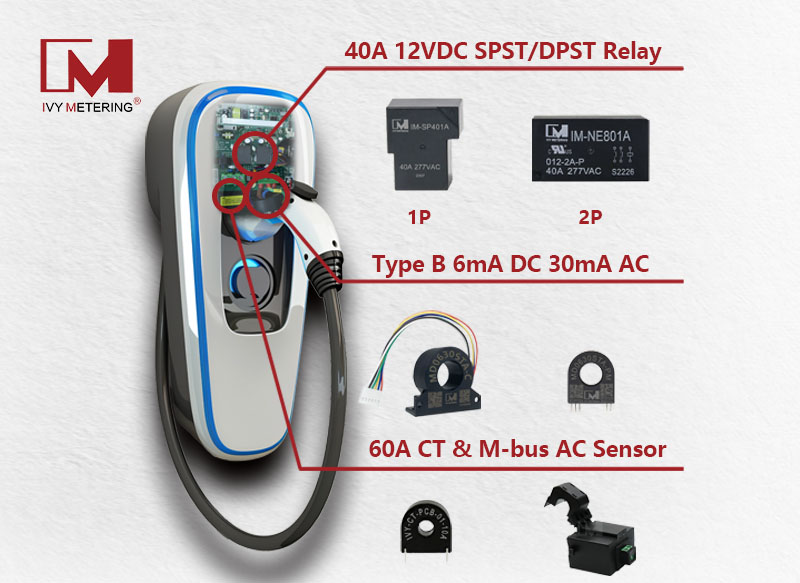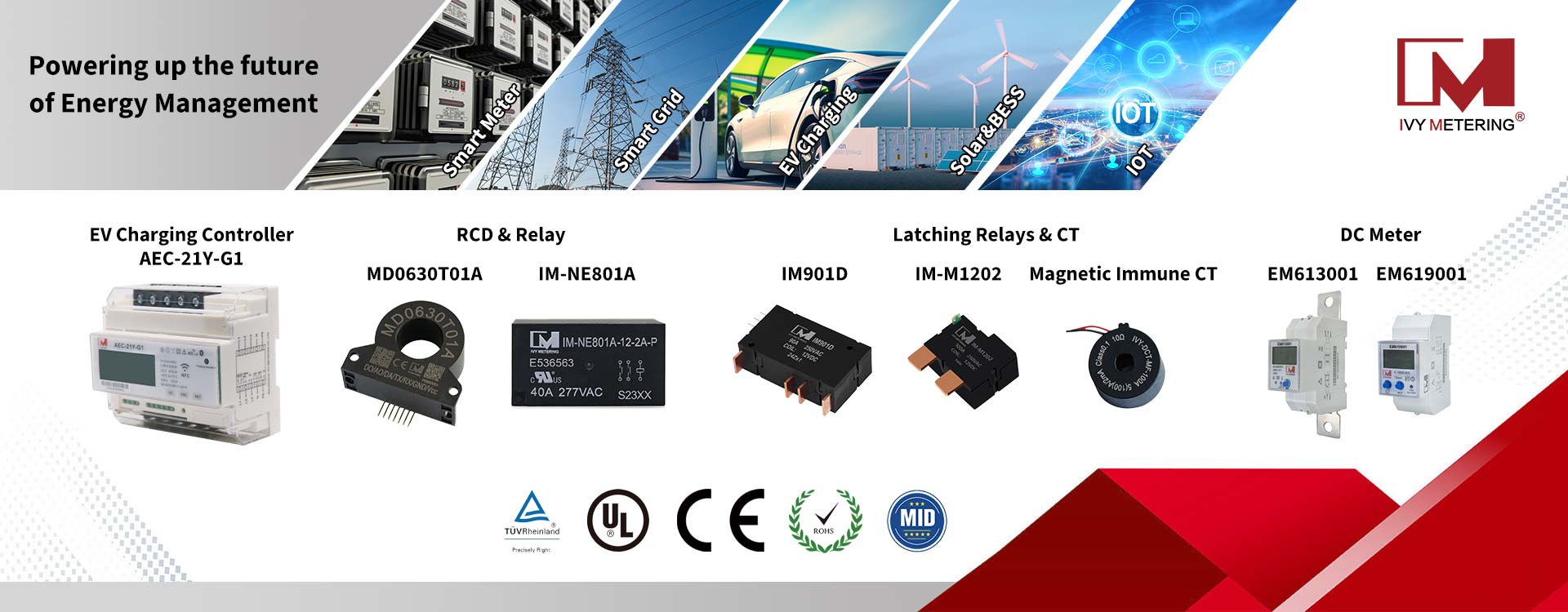What EVSE components are needed to build a charging station?
With the booming development of the EV industry, people are paying increasing attention to the charging stations themselves. The protection and safety features of an EV charger are among the most important considerations when developing an EV charging station.
Components of an electric vehicle charger include relays for switching high-current AC power, a residual current monitor (RCM) for safety, and current transformers (CTs) for measuring current (typically for load balancing). AC voltage sensing components are also crucial for monitoring and ensuring the correct voltage is supplied to the vehicle.

Relays
Function: High-current relays act as the main switch, connecting or disconnecting the electric vehicle's power supply.
How it works: The control module signals the relay to close, allowing current to flow to the vehicle. Opening the relay stops charging.
Advantages: It isolates the low-voltage control system from the high-voltage power circuit, protecting both the charger and the user.
Residual Current Monitor (RCM)
Function: This is a critical safety component used to detect leakage or ground faults and shut down the charger to prevent electric shock in the event of a fault.
How it works: It continuously monitors the current flowing into and out of the vehicle. If an imbalance is detected, a fault is triggered.
Requirements: Electric vehicle chargers require a dedicated residual current device (RCD) or residual current control module (RCM). The type of RCM (e.g., Type A, Type B, or combined with a DC sensor) depends on the charger's functionality and the likelihood of DC leakage faults.
Current Transformer (CT)
Function: Current transformers typically use a clamp-on design to measure the current flowing through a cable without direct contact with the conductor.
Operating Principle: It determines the power consumption by sensing the magnetic field around a high-current cable.
Advantages: This allows the charger to perform functions such as load balancing, adjusting the charging rate based on the total household power consumption to avoid circuit overload.
AC Voltage Detection
Function: Components capable of accurately measuring the AC voltage from the power grid are crucial for ensuring the charger operates within the correct voltage range.
Operating Principle: These sensors provide real-time voltage data to the control module.
Advantages: Accurate voltage detection improves charging accuracy and helps prevent power loss. It also protects the vehicle's onboard charger and battery system, ensuring they receive the correct voltage and isolating low-voltage electronics from high-voltage systems.
 Previous: None
Previous: None











